Eikonal Phase Retrieval: unleashing the potential of fourth-generation sources for enhanced propagation-based tomography on biological samples
- PMID: 40673709
- PMCID: PMC12416417
- DOI: 10.1107/S1600577525005223
Eikonal Phase Retrieval: unleashing the potential of fourth-generation sources for enhanced propagation-based tomography on biological samples
Abstract
The evolution of synchrotrons towards higher brilliance beams has increased the possible sample-to-detector propagation distances for which the source confusion circle does not lead to geometrical blurring. This makes it possible to push near-field propagation-driven phase-contrast enhancement to the limit, revealing low-contrast features that would otherwise remain hidden under excessive noise. Until now, this possibility was hindered in many objects of scientific interest by the simultaneous presence of strong phase gradient regions and low contrast features. The strong gradients, when enhanced with the now possible long propagation distances, induce such strong phase effects that the linearization assumptions of current state-of-the-art single-distance phase retrieval filters are broken, and the resulting image quality is jeopardized. Here, we introduce a new iterative phase retrieval algorithm and compare it with the Paganin phase retrieval algorithm, in both the monochromatic and polychromatic cases. In the polychromatic case the comparison was done with an extrapolated Paganin algorithm obtained by reintroducing, into our phase retrieval algorithm, the linearization approximations underlying the Paganin forward model. Our work provides an innovative algorithm that efficiently performs the phase retrieval task over the entire near-field range, producing images of superior quality for mixed attenuation objects. Our tests on data with shorter propagation distances show that the artifacts, which our algorithm effectively addresses, are present already in more standard third-generation synchrotron setups. This highlights the potential broad applicability of the Eikonal Phase Retrieval method.
Keywords: eikonal approximation; iterative phase retrieval; phase-contrast tomography; propagation-based imaging; synchrotron imaging.
open access.
Conflict of interest statement
The authors declare no conflicts of interest.
Figures


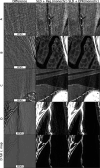
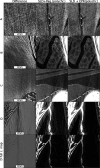

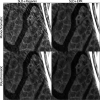

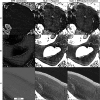

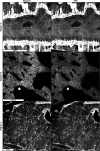

Similar articles
-
Prescription of Controlled Substances: Benefits and Risks.2025 Jul 6. In: StatPearls [Internet]. Treasure Island (FL): StatPearls Publishing; 2025 Jan–. 2025 Jul 6. In: StatPearls [Internet]. Treasure Island (FL): StatPearls Publishing; 2025 Jan–. PMID: 30726003 Free Books & Documents.
-
Short-Term Memory Impairment.2024 Jun 8. In: StatPearls [Internet]. Treasure Island (FL): StatPearls Publishing; 2025 Jan–. 2024 Jun 8. In: StatPearls [Internet]. Treasure Island (FL): StatPearls Publishing; 2025 Jan–. PMID: 31424720 Free Books & Documents.
-
Genetic determinants of testicular sperm extraction outcomes: insights from a large multicentre study of men with non-obstructive azoospermia.Hum Reprod Open. 2025 Aug 29;2025(3):hoaf049. doi: 10.1093/hropen/hoaf049. eCollection 2025. Hum Reprod Open. 2025. PMID: 40896145 Free PMC article.
-
The Black Book of Psychotropic Dosing and Monitoring.Psychopharmacol Bull. 2024 Jul 8;54(3):8-59. Psychopharmacol Bull. 2024. PMID: 38993656 Free PMC article. Review.
-
The Lived Experience of Autistic Adults in Employment: A Systematic Search and Synthesis.Autism Adulthood. 2024 Dec 2;6(4):495-509. doi: 10.1089/aut.2022.0114. eCollection 2024 Dec. Autism Adulthood. 2024. PMID: 40018061 Review.
References
-
- Admans, L. (2024). Rapport de fin d’etudes. ENSE3 Grenoble, France. (Available as supplementary material from the ArXiv preprint: https://arxiv.org/abs/2311.14745.)
-
- Antoine, C., Nygård, P., Gregersen, W., Holmstad, R., Weitkamp, T. & Rau, C. (2002). Nucl. Instrum. Methods Phys. Res. A490, 392–402.
-
- Brunet, J., Walsh, C. L., Wagner, W. L., Bellier, A., Werlein, C., Marussi, S., Jonigk, D. D., Verleden, S. E., Ackermann, M., Lee, P. D. & Tafforeau, P. (2022). bioRxiv : https://www.biorxiv.org/content/early/2022/07/11/2022.07.02.498430. - PubMed
-
- Chantler, C., Olsen, K., Dragoset, R., Chang, J., Kishore, A., Kotochigova, S. & Zucker, D. (2023). X-ray form factor, attenuation and scattering tables, Version 2.1. https://www.nist.gov/pml/data/ffast/index.cfm.
-
- Cianciosi, F., Buisson, A.-L., Tafforeau, P. & Van Vaerenbergh, P. (2021). Proceedings of the 11th Mechanical Engineering Design of Synchrotron Radiation Equipment and Instrumentation (MEDSI2020), 26–29 July 2021, Chicago, IL, USA, pp. 229–231. MOIO02.
Grants and funding
LinkOut - more resources
Full Text Sources

